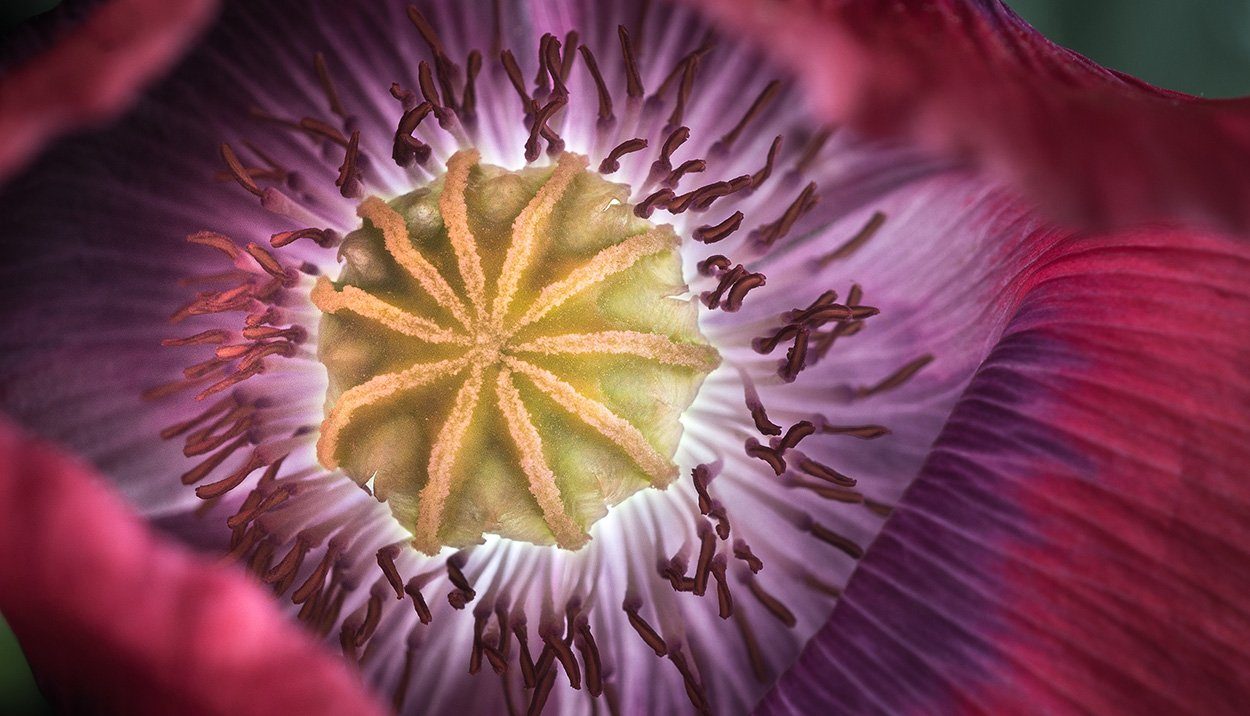
This photo shows the purple flower and spherical seed pod of an opium poppy. Unlike many other crops, it was not first domesticated in the Middle East, but in the Alpine region, among other places
Opium poppy (Papaver somniferum) is an herbaceous plant that blooms in red, white or purple, as can also be seen on our picture. The spherical seed pods in the poppy flower, the pores of which are arranged in a star shape, contain hundreds of oily poppy seeds. Thanks to these seeds, the opium poppy is a versatile crop: The seeds are used for foods such as desserts and pastries or as a spice.
In addition, oil can be obtained from the high-fat seeds, which is used as edible oil or in skin creams. At the same time, however, the juice of the unripe seed pods is a source of pain relieving opium and opiate drugs, which are extremely addictive. The pain-relieving effect of the opium poppy made it a popular medicinal plant in the past.
Our ancestors therefore grew opium poppies thousands of years ago in order to obtain porridge and oil from its seeds, but also to use it as a medicinal plant. “When and where exactly the opium poppy was domesticated has not yet been precisely determined,” explains Ferran Antolin from the University of Basel. “There was a lack of methods to identify archaeological finds of poppy seeds either as domesticated or as a wild subspecies.”
However, Antolin and his team have now developed a method that allows this distinction to be made. Based on their analyzes, they determined that the opium poppy – unlike many other early crops such as cereals, legumes and flax – was actually not domesticated in the fertile crescent. Instead, one of the centers of early poppy domestication was in the Alpine region: as early as 5500 BC, early farmers were growing opium poppies there. About half of the poppy seeds found there from this period come from the wild type, whose home is in the western Mediterranean, and half from domesticated poppy varieties.